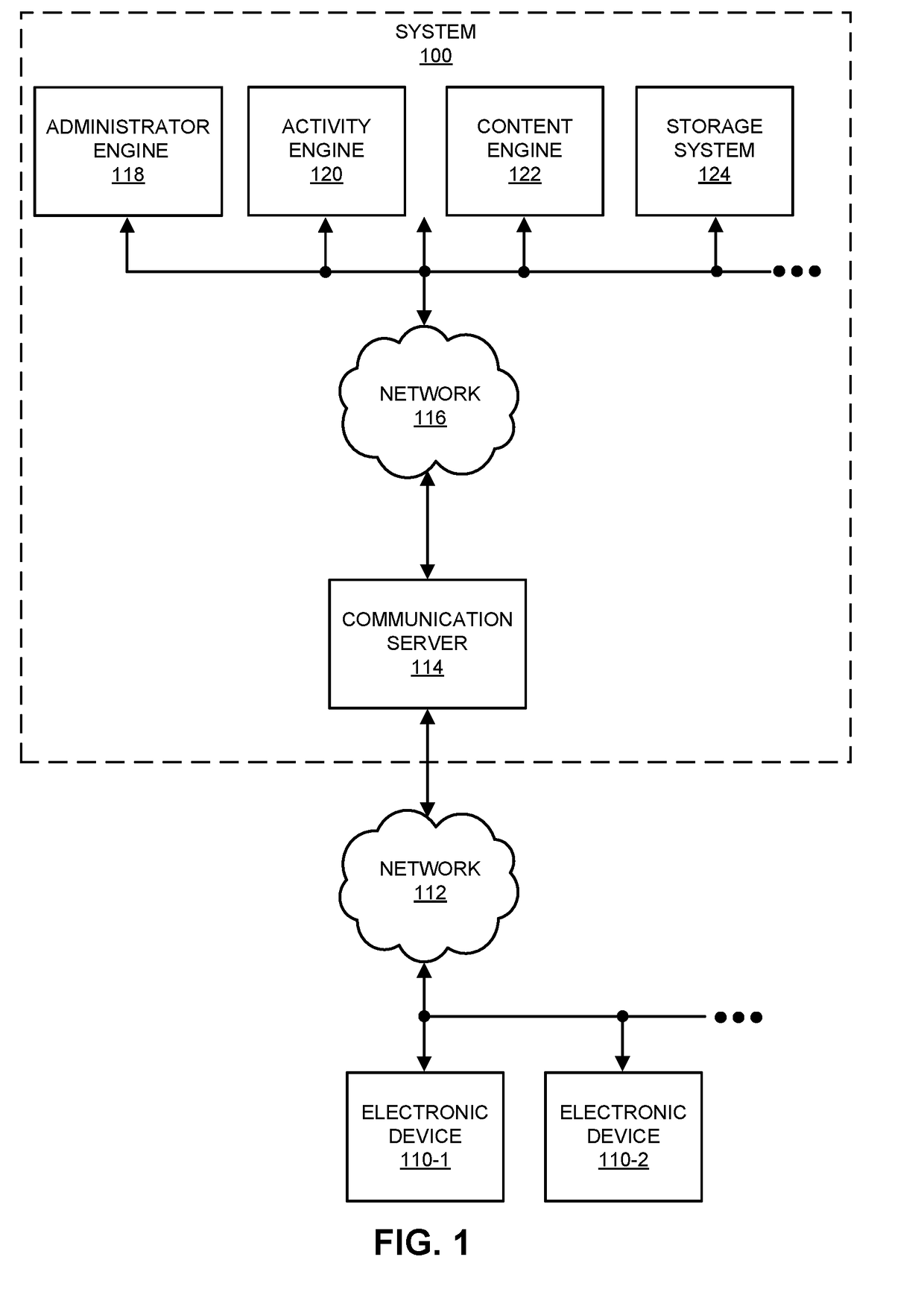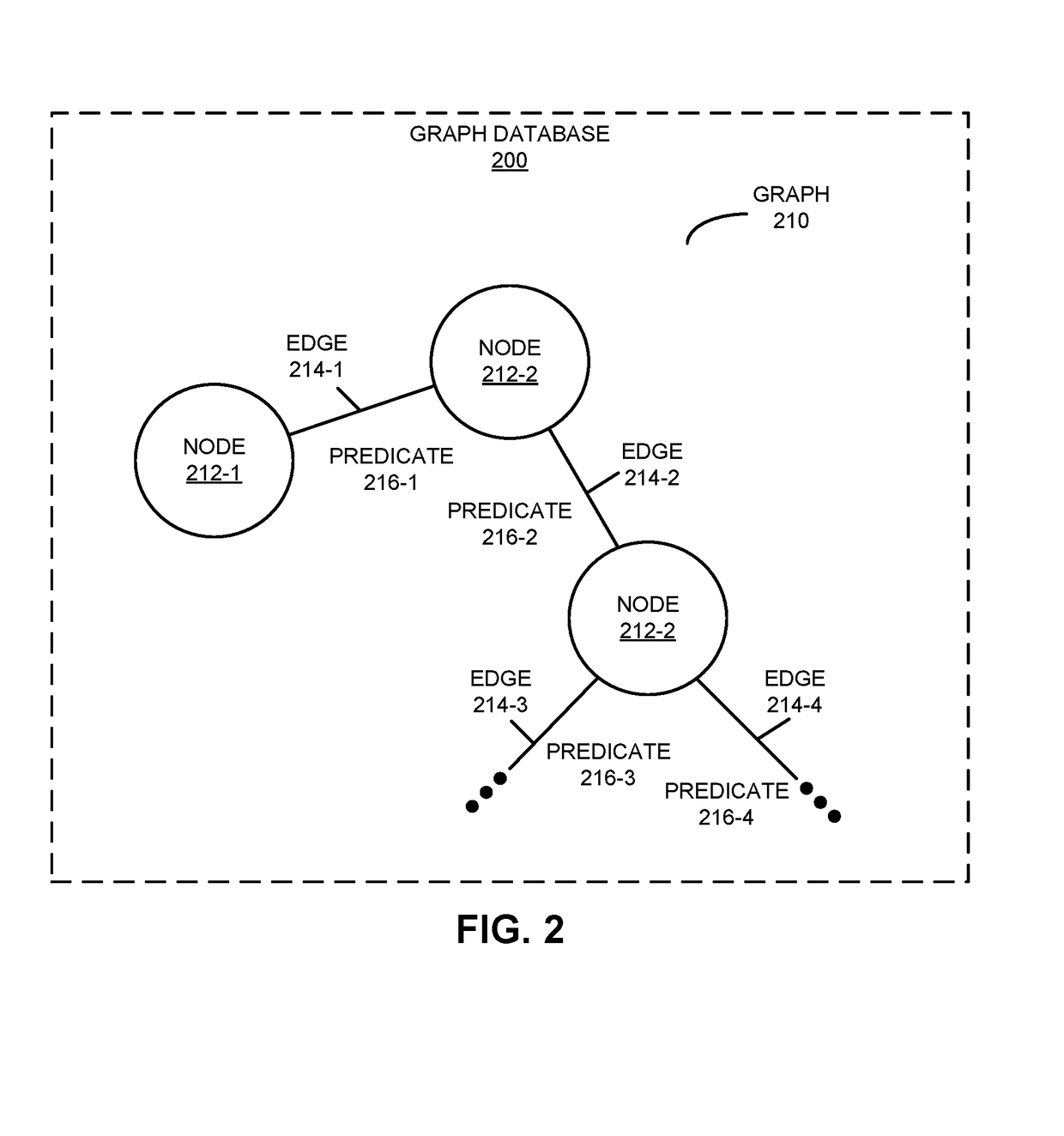Translating queries into graph queries using primitives
a graph query and primitive technology, applied in relational databases, hierarchical databases, instruments, etc., can solve the problems of affecting the performance and user experience of applications, and often not knowing the relational model of relational databases
- Summary
- Abstract
- Description
- Claims
- Application Information
AI Technical Summary
Benefits of technology
Problems solved by technology
Method used
Image
Examples
Embodiment Construction
[0033]In order to request desired information from a graph database, a system executes a query (which is sometimes referred to as an ‘edge query’) against the graph database. The graph database may store a graph that includes nodes, edges between the nodes, and predicates to represent and store data with index-free adjacency. Moreover, the query may identify a first edge associated with a predicate that specifies one or more of the nodes in the graph. In response to the query, the system receives a result that includes a subset of the graph. In particular, the subset of the graph typically must include the desired information expressed within an associated structure of the graph.
[0034]Furthermore, the result of the query may be used in a concatenated or sequential set of queries. In particular, the system may execute a second query against the subset of the graph received in response to the original query. This second query may identify a second edge associated with a second predica...
PUM
 Login to View More
Login to View More Abstract
Description
Claims
Application Information
 Login to View More
Login to View More - R&D
- Intellectual Property
- Life Sciences
- Materials
- Tech Scout
- Unparalleled Data Quality
- Higher Quality Content
- 60% Fewer Hallucinations
Browse by: Latest US Patents, China's latest patents, Technical Efficacy Thesaurus, Application Domain, Technology Topic, Popular Technical Reports.
© 2025 PatSnap. All rights reserved.Legal|Privacy policy|Modern Slavery Act Transparency Statement|Sitemap|About US| Contact US: help@patsnap.com



